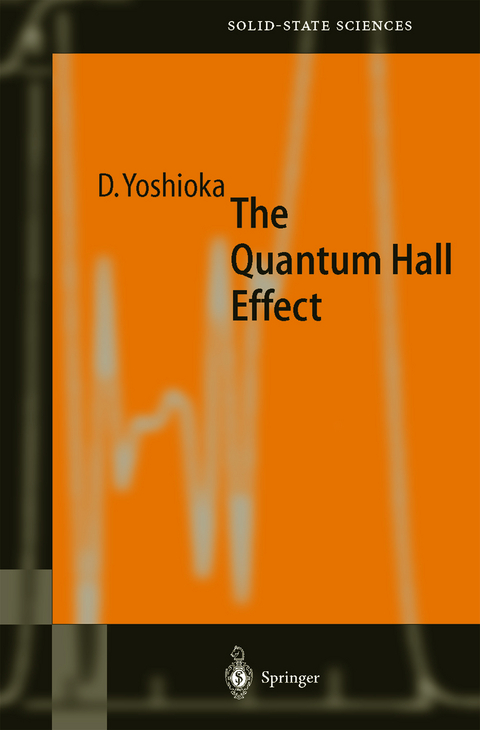
The Quantum Hall Effect
Springer Berlin (Verlag)
978-3-540-43115-2 (ISBN)
Today, more than 20 years after the discovery of the quantum Hall effect, the number of publications in this field, at more than one paper per day, is still increasing. This remarkable fact requires some explanation. It also poses, but perhaps also answers, the question of why a new monograph entitled 'The Quantum Hall Effect' is a highly desirable addition to the literature. Originally the quantum Hall effect (QHE) was a term coined to describe the unexpected observation of a fundamental electrical resistance, with a value independent of the microscopic details of the semiconductor device. The simplest explanation of this phenomenon was based on an independent electron picture. The subsequent discovery of the fractional quantum Hall ef fect demonstrated that a many-body wave function and a more global view of the system is necessary to incorporate and explain interesting new aspects. Today, the quantum Hall effect has become a pseudonym for many differ ent phenomena observed in high magnetic fields, with connections not only to solid state physics but also to theoretical descriptions in plasma physics, astrophysics, atomic physics, and high energy physics. There are even spec ulations that a higher-dimensional generalization of the QHE may be useful for discussing questions related to the basic properties of space.
From the contents:
-Discovery of the Quantum Hall Effect
- Two-Dimensional Electrons in a Magnetic Field
- The Integer Quantum Hall Effect
- The Fractional Quantum Hall Effect
- Composite-Particle Mean-Field Theory
- Spin and Pseudospin Freedom
- Even-Denominator States
- Electron States at the Sample Edge
- Higher Landau Levels
- Answers to Exercises
- References
- Index
From the reviews:
In this monograph Daijiro Yoshioka has done a marvelous job.
--The Physicist
"This book will provide a nice starting point for ideas that an experienced solid state physics educator may use for an in-depth introduction to the fundamentals of both the integral and fractional Quantum Hall effect. ... this volume does provide a useful introduction to this exciting field in one rather small but excellently produced volume. Rather nicely, each chapter has a few exercises to challenge the reader." (Gary J. Long and Fernande Grandjean, Physicalia, Vol. 25 (3), 2003)
"In this monograph Daijiro Yoshioka has done a marvelous job. ... he gives an excellent pedagogic description of both integral and fractional QHEs. ... This book would be a good reference for a post-graduate course in Condensed Matter Physics. Those interested enough to learn the subject from scratch, are recommended to buy personal copies." (Mukunda Das, The Physicist, Vol. 39 (5), 2002)
| Erscheint lt. Verlag | 26.2.2002 |
|---|---|
| Reihe/Serie | Springer Series in Solid-State Sciences |
| Zusatzinfo | XII, 210 p. |
| Verlagsort | Berlin |
| Sprache | englisch |
| Maße | 155 x 224 mm |
| Gewicht | 445 g |
| Themenwelt | Naturwissenschaften ► Physik / Astronomie ► Atom- / Kern- / Molekularphysik |
| Naturwissenschaften ► Physik / Astronomie ► Festkörperphysik | |
| Naturwissenschaften ► Physik / Astronomie ► Thermodynamik | |
| Schlagworte | Quanten-Hall-Effekt • Quantum Hall Effect • quantum mechanics • Strongly correlated electrons • Strong magnetic fields • Two-dimensional electrons |
| ISBN-10 | 3-540-43115-2 / 3540431152 |
| ISBN-13 | 978-3-540-43115-2 / 9783540431152 |
| Zustand | Neuware |
| Haben Sie eine Frage zum Produkt? |
aus dem Bereich


